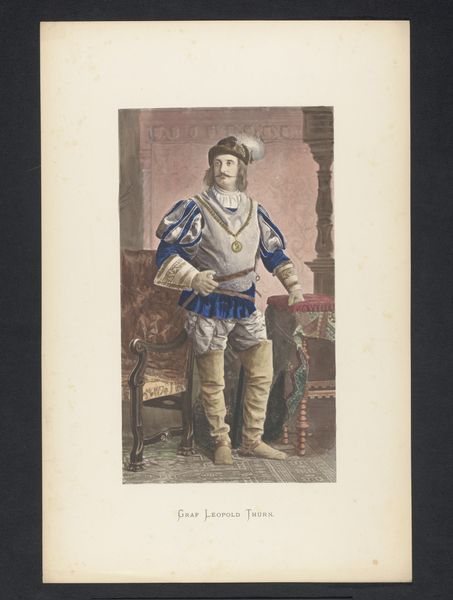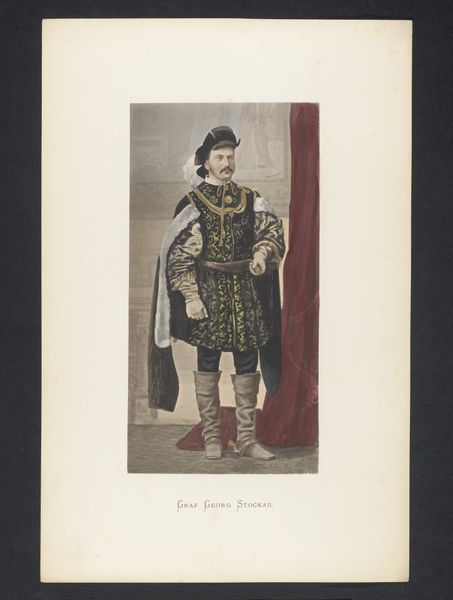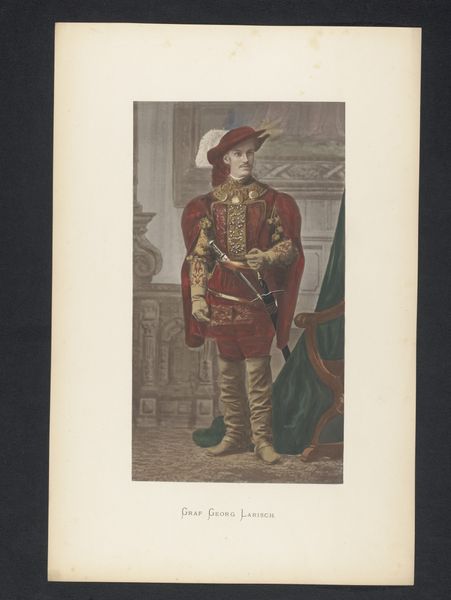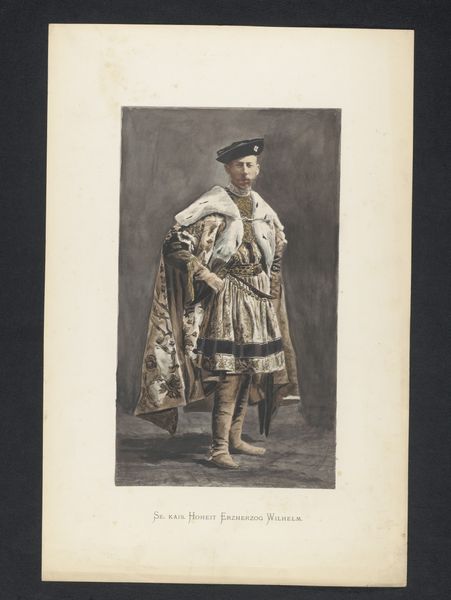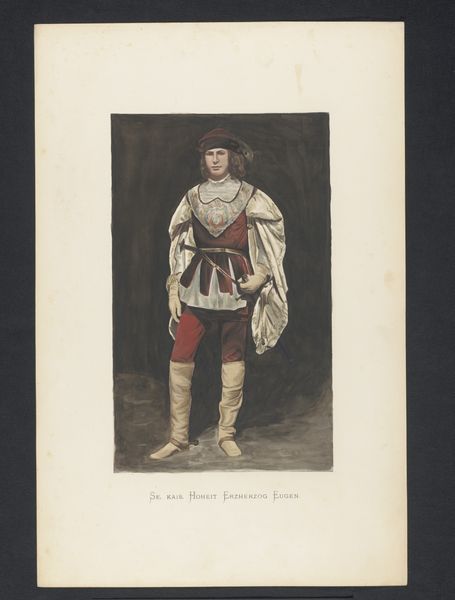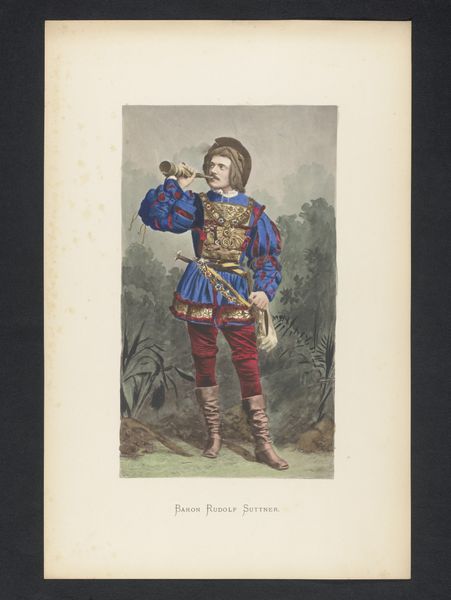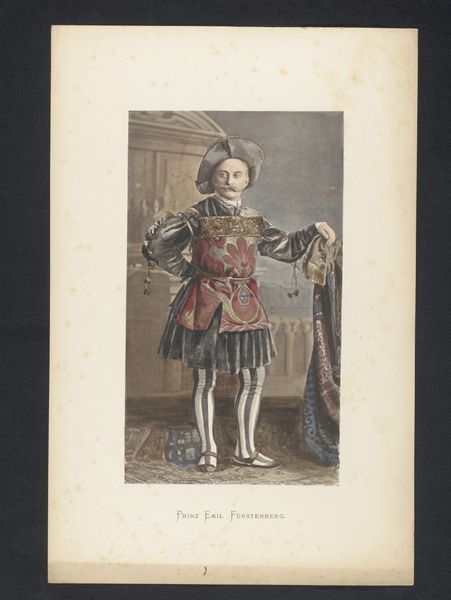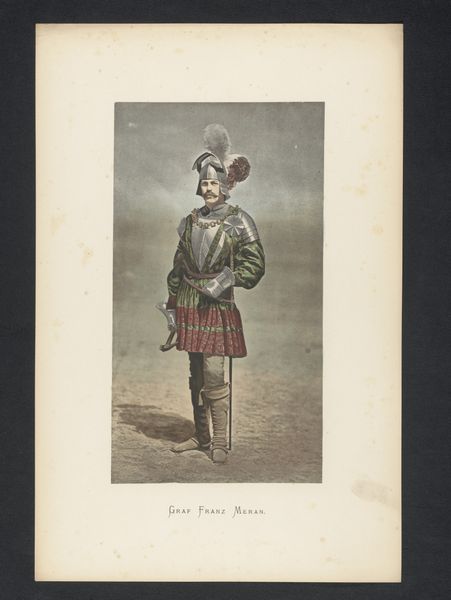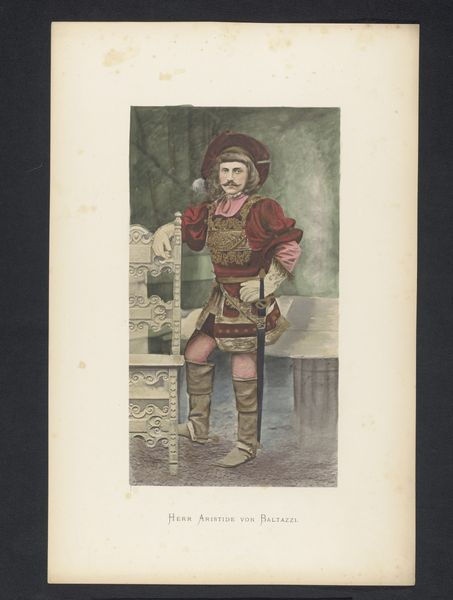
watercolor
#
portrait
#
aged paper
#
antique finish
#
paper non-digital material
#
pale palette
#
muted colour palette
#
white palette
#
personal journal design
#
watercolor
#
folded paper
#
genre-painting
#
history-painting
#
academic-art
#
letter paper
#
paper medium
#
realism
Dimensions: height 372 mm, width 206 mm
Copyright: Rijks Museum: Open Domain
Curator: Here we have a watercolor portrait, possibly dating from 1880 to 1884. It depicts Count Erwin Frederik Karel van Schönborn-Buchheim. What's your immediate take on it? Editor: It’s...surprisingly charming? There’s a theatrical air, the colours so gently muted. He looks like he's stepped out of some wonderfully obscure history play, though I’m not sure which one! Curator: That theatricality is interesting. Given the period, the elaborate costume points to a kind of historical reenactment, evoking a romanticized past. The watercolor medium softens the image, further lending it an air of wistful nostalgia. Editor: It’s definitely not striving for gritty realism, is it? More like a faded photograph of a stage performance. I imagine this sort of portrait functioned as a kind of social currency then. Did it reinforce existing ideas about status and lineage, perhaps? Curator: Absolutely. Portraits of this nature were often commissioned to assert aristocratic identity, harking back to perceived eras of nobility and chivalry. His very pose—hand on hip, steady gaze—it speaks of power presented as both natural and inherited. Even the somewhat self-conscious look helps! Editor: Yes, there’s a distinct "look at me, how wonderfully historical I am" vibe. But the lightness of the watercolour almost undermines that grand statement, don't you think? Curator: In a way, yes. It's as if the artist acknowledges the constructed nature of the image, the 'play-acting' element. Perhaps the family were keen theatre-goers. Perhaps, even, the portrait records a character played by Erwin Frederik Karel van Schönborn-Buchheim. Editor: It certainly raises all kinds of intriguing possibilities, and somehow that whisper of artifice makes it much more appealing than any straightforwardly pompous portrait of the era. Well, I'll certainly ponder that next time I attend the theatre myself! Curator: Indeed! It invites us to consider how we continue to construct and represent our own identities, even today.
Comments
No comments
Be the first to comment and join the conversation on the ultimate creative platform.


